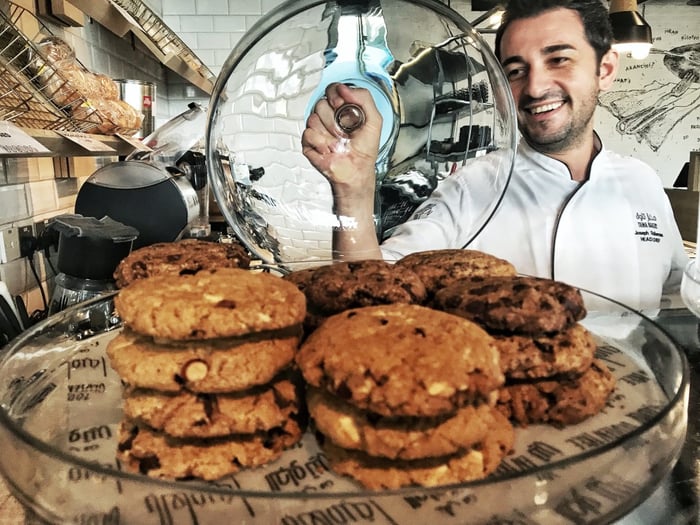Restaurant Reputation Management is Crucial for Business Success
Restaurant reputation management is one of the most important restaurant marketing tactics owners and marketers should i...
Read full articleIn today's overly competitive restaurant industry, customer retention is more critical than ever. Patrons have more options than ever before when it comes to restaurants and cafes to give their business to, and they're going to visit the places where they feel most comfortable - and places offering exceptional customer service.
In fact, more consumers read restaurant reviews this year than they did the year before. 90% of guests check out a restaurant online before eating there.
Even if you strive to provide stellar customer service, a customer will eventually have a negative experience.
As author and customer service strategist John Tschohl explains, "If there's an industry that seems to have more problems, and more difficulties, and more things that can happen that are bad, it's got to be in the restaurant business."
When things go awry, it is essential to resolve issues and keep the customer happy. Doing so will help ensure that they continue coming back to your place of business.
Customer service recovery refers to the process of identifying a negative customer experience or a dissatisfied customer, responding to them and resolving their issue, and then converting them into more of a loyal customer than if they had never had the negative experience.
Another term for this scenario is the service recovery paradox. Defined by Wikipedia as "a situation in which a customer thinks more highly of a company after the company has corrected a problem with their service, compared to how they would regard the company that provides non-faulty service."
Customer service recovery creates an excellent opportunity for you to convey to the customer how valuable they are to you and your business. And it is why every business should have a fair customer service recovery process in place.
Imagine visiting your favorite restaurant for a nice, relaxing dinner that you've come to expect from this establishment. You're seated quickly, and your drinks come out perfectly. So far, so good.
You order your favorite medium-rare steak and sit back with your drink and appetizer while watching a baseball game on the television by the bar.
A few minutes later, your steak comes out, and you're ready to dig in. But when you cut into it, you notice that it is cooked well-done. Unfortunately, a well-done steak is not what you wanted or expected.
The manager then approaches you and asks how your experience has been thus far. You inform him that everything has been incredible but that your steak is overcooked.

The manager immediately removes your plate from the table and heads back to the kitchen. He quickly returns and offers to get you another drink, free-of-charge. You accept the offer, and a few minutes later, you have a new drink and a delicious medium-rare steak.
When you are finished with your dinner and ask your server for the check, they tell you that the manager has decided to "comp" the entire visit and not charge for the meal or drinks. You leave the restaurant elated and satisfied, knowing that your favorite restaurant genuinely values you as a customer.
A few months later, you move to a nearby town, but because this is your favorite restaurant, and they've shown you that you are valuable to them, you drive the extra 10 miles to dine at this restaurant instead of choosing one closer to your new home.
This example demonstrates customer service recovery, turning a bad experience into a positive one, and creating a more loyal customer out of it. This is easily done with a customer experience platform, like Bloom Intelligence.
When customers complain or notice a customer having a negative experience, it is imperative to begin resolving the issues at hand as quickly as possible. This recovery is where having a defined customer service recovery process can make a difference, so that everyone involved will be on the same page.
Every restaurant is different, and every business place has its own set of challenges, policies, and procedures. Here are some ideas to help you create the best strategy for your business.
Again, every restaurant and retail store is different, so your procedure may differ from the steps above. The important thing is to have something in place to act swiftly whenever a negative customer experience arises. The quicker you act, the better the results will be, and the more valuable and satisfied the customer will feel. Always leave things on a positive note.
If you miss a negative experience without resolving the issue and find a negative customer review on one of the online ratings and review websites, follow the TACT method outlined here.
Ideally, though, you want to catch them before leaving a rating on a popular internet site. Bloom Intelligence can send automated messages to customers, asking them for a rating of their recent experience. If the customer gives a rating above a threshold you can configure, say 3.5 stars; you can respond with another email asking them to rate you on any of the significant rating websites.
This response is a great way to continue reinforcing higher ratings on these websites.
More importantly, should the customer give you a rating below your set threshold, you can respond with an email containing a sincere apology and an incentive for them to come back and give you another chance. This tactic can help mitigate the chances that they leave a scathing review on one of the significant rating websites.

If you missed a customer having a poor experience at your place of business, and you miss a negative rating or review they may have left online, then there is a good chance they will not be returning to your establishment.
Bloom Intelligence uses advanced algorithm sets to help determine when this is the case. When a customer fails to return within their expected return date, they receive a mark that they are at risk of churning. Bloom can then send them an automated message asking them to come back, perhaps containing an incentive such as a free dessert or appetizer.
Bloom users see up to 38% of their at-risk customers come back through their doors. In today's competitive marketplace, rescuing any at-risk customer is huge for revenue. Imagine seeing 38% of them returning!
For more details on Bloom's ratings and at-risk features, along with real-life case studies, click the links below:
Related Topics
Guides
Restaurant reputation management is one of the most important restaurant marketing tactics owners and marketers should i...
Read full articleAre you struggling to see a positive ROI from your restaurant marketing campaigns? Are you tired of spending money and t...
Read full articleAs restrictions are lifted after the pandemic, and restaurants are opening their doors again, a crucial challenge faced ...
Read full articleNever miss a post! We'll keep you up-to-date on the latest restaurant and retail WiFi marketing information.

.svg)
We would love to hear from you! If you have any questions, comments or ideas about our blog, drop us a line and let us know.
Or call us at 727-877-8181.